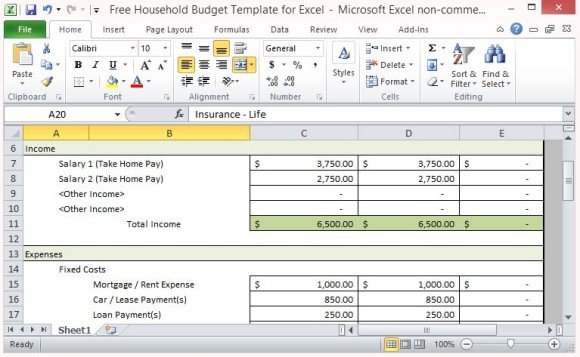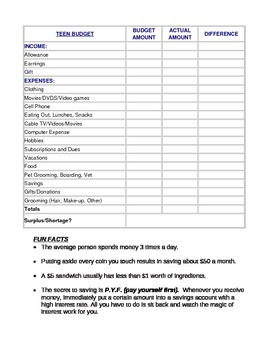
The variable costs per jacket are $60, and the business incurs $200,000 in fixed costs. Let’s say Prestige sells a jacket for $100. The formula is as follows:įixed costs / (sales price per unit – variable costs per unit) = break-even point in units The break-even point in units formula divides the business’s fixed costs by the sales price per unit subtracted from the variable costs per unit. Each unit sold above the break-even level generates profit. This break-even point in units formula calculates the number of units you must sell to cover all costs. Several useful formulas use fixed and variable expenses, including the break-even point in units formula.
#Examples of fixed monthly expenses how to#
How to calculate the break-even point in units using fixed and variable costs If you understand fixed, variable, and total costs, you can perform more valuable business analysis. Don’t assign fixed costs to new production if you haven’t paid the total fixed costs in full. When you’re pricing your products, analyse both the average fixed costs and total fixed costs. The marginal cost of producing 300 more shirts includes the variable costs but not the fixed expenses. But those 300 shirts have marginal costs-or the cost to produce one more unit. So if a customer orders 300 shirts for delivery by 31 December, the price of those shirts would not include any fixed costs. The business has covered its $300,000 total fixed expenses for 2019. Let’s assume that, as of 27 December, 2019, Prestige produced and sold 15,000 shirts and that each shirt’s price included a $20 fixed cost. Each unit you produce after you cover all the fixed expenses costs the customer less and generates more profit.

Once you produce and sell enough items to pay the total dollar amount of the fixed expenses, you no longer incur the cost. But if Prestige can produce 20,000 shirts with the same $300,000, they can reduce their average fixed cost to $15.īut don’t let the fixed cost per unit mislead you. Using the average fixed cost formula, Prestige finds its fixed expense per shirt is $20. Let’s say Prestige’s total fixed expenses were $300,000 in 2019, and in that year, they produced 15,000 shirts. Total fixed costs / number of units produced = average fixed cost The ratio produces a fixed expense per unit, which is information you must use carefully. Average fixed costs divide a business’s total fixed costs by the number of units it produces. Many businesses use average fixed costs to make decisions and measure how effectively they use production costs. But the $50,000 quality control management salary is a direct fixed cost. The business’s management salaries are indirect fixed costs. Assume that the company hires a quality control manager to monitor production and reduce defective units produced. If Prestige paid a fixed annual contract for a service related to production, the expense would be a direct fixed cost. It’s based on the value of the property taxed and the tax rate. Usually, loan payments include interest payments and principal balance payments. They’re based on your loan’s interest rate and the principal amount you owe. Interest expenses from a loan are fixed costs. It’s based on the premiums listed in an insurance policy. The cost is constant and does not change with sales or production. Here are four common examples of fixed costs: If a production run of shirts requires 100 machine hours, Prestige might add the $25 repair costs to the shirt costs.įixed expenses may be direct or indirect costs. Last year, a machine had $500,000 in repair and maintenance costs and 2 million machine hours. To do that, they divide a machine’s repair and maintenance costs for one year by the machine hours used in the same year. Let’s say Prestige wants to calculate their unit cost for repairs. The more Prestige uses a machine, the more maintenance it will require. Machine hours are an effective way to allocate repair costs. So Prestige allocates repair costs to the machine hours required in a year. When the company incurs repair costs on machinery-a variable indirect cost -they cannot trace those costs back to production.

Instead, they allocate these costs to business activity levels. Prestige cannot trace the indirect costs (or overhead costs) to production directly. Their variable direct costs include cotton material and the labour to run the machinery. In general, raw materials and labour are direct costs. These four terms are related and explain why a business incurs a particular cost.īusiness expenses that you can trace directly to the product or service are direct costs. In addition to fixed and variable costs, others may be either direct or indirect.

Four types of costs: fixed, variable, direct, and indirect


 0 kommentar(er)
0 kommentar(er)
